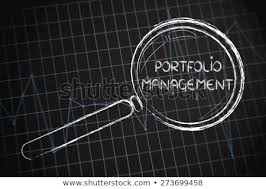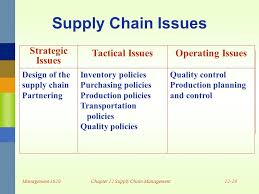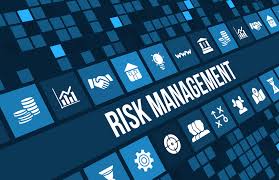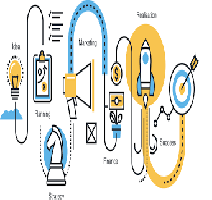Managing Joint Ventures Perspectives Response to Essay (150 words minimum, per reply) Respond to 3 essay threads listed below with at least 150 words per response.

When replying, please provide a substantive and relevant reply which contains a critical analysis of their findings. Make sure to offer additional research and critical analysis to support your response.
Richards
DB essay 1: Joint Ventures
Key Term and Why I Am Interested in It
The key term that I want to research this week is joint ventures. I am interested in researching this topic as I do not currently know a lot about joint ventures. Based off of the definition provided in the textbook, I believe that there will be a lot of information on the topic that will allow me to have a better understanding of joint ventures. I am mostly interested in seeing how the companies determine who has the most power or ownership once the alliance has been formed, and the terms in which companies form these alliances. I am also interested in seeing what each company thinks they will gain from forming an alliance, and how the alliance may affect the market.
Managing Joint Ventures Perspectives and Explanation of Key Term
Joint ventures are essentially an alliance between at least two companies in order to form a new company or entity (Satterlee, 2009). It is very similar to a strategic alliance. Although there are many advantages to joint ventures with foreign countries, such as reduced overhead costs and the ability to have access to foreign technologies and techniques (Satterlee, 2009), there are also many disadvantages when it comes to partnering with foreign countries. Because there are many differences in the countries’ laws and regulations, it is important for management to be aware of the laws that may affect their business. Satterlee implies that all U.S. companies should seek legal advice in the U.S. and in the foreign country in which they are partnering with (Satterlee, 2009). This will ensure that all companies are adhering to all of the laws that are relevant to the business.
Managing Joint Ventures Perspectives Major Article Summary
The article by Tong, Reuer and Peng seeks to provide more information on international joint ventures and explain the benefits that these joint ventures can provide. The authors provide background information on the theory, the real options theory, that is used to explore the benefits of international joint ventures. According to the authors’ research, the real options theory allows firms to determine whether or not the opportunity being investigated would be beneficial to the firm (Tong, Reuer, & Peng, 2008). Using this theory when analyzing joint venture options would allow firms to determine if the alliance would allow them to have a positive economic value or a positive growth option value (Tong, Reuer, & Peng, 2008). The real options theory also allows firms to determine if there are any key value drivers that affect investment decisions (Tong, Reuer, & Peng, 2008). This theory will help ensure that firms have all of the necessary information to make investment decisions.
The authors also discuss how international joint ventures can be beneficial to firms. By forming this type of alliance, risk will be able to spread throughout multiple firms, therefore, reducing the risk for all firms involved (Tong, Reuer, & Peng, 2008). This shows the importance of assuming a majority position in the alliance. Although a majority position the alliance can be beneficial, minority positions can provide just as many benefits. The authors state that minority positions can provide many future growth opportunities (Tong, Reuer, & Peng, 2008). The research from this article allows the reader to have a better understanding of the advantages that international joint ventures can provide for all companies that are involved. By entering into an international joint venture, firms will be able to analyze all of their future growth opportunities and how the alliance will affect their economic value and their position in the market. Whether the firm is in a majority or a minority position in the alliance, they will still be able to reap some benefits from the alliance.
Managing Joint Ventures Perspectives Discussion
The major article is related to the above explanation because it shows that there are many advantages to entering into a joint venture. Because the article focuses on international joint ventures, it is implied that all countries involved in the alliance will have different values, rules and regulations. This may cause some problems and may make it difficult for all firms to agree on all of the terms of the decisions that need to be made. Although some disagreements may occur, it is important to remember that all countries and firms will benefit from the joint venture. Whether they provide the most important products or aspects of the new entity or if they only provide a small contribution, all firms will be able to reap some benefits from forming the joint venture. This shows the importance of seeking legal counsel. All firms should be equipped to deal with any disagreements that may occur.
The article by Beamish and Lupton provides information on the management side of joint ventures. This shows the importance of having one firm in charge of the alliance in order to ensure that all firms are working together to achieve the overall goals of the joint venture (Beamish & Lupton, 2009). Further research into the management side of joint ventures shows that having a board of directors can help ensure that all firms are on the same page and can help alleviate any tension or conflicts between firms (Reuer, Klijn, & Lioukas, 2013). When researching the advantages of joint ventures, Spalding found that joint ventures allow firms to share ownership of the new entity (Spalding, 1989), which implies that the risk of the new entity will be shared among all of the firms involved. Further research into the advantages of joint ventures shows that all firms will have opportunities for growth and success (Chan, Kensinger, & Martin, 2007). Joint ventures will be able to provide benefits to all firms involved.
Managing Joint Ventures Perspectives References
Beamish, P.W., & Lupton, N.C. (2009). Managing Jint Ventures. Academy of Management Perspectives, 23(2). 75-94. Retrieved from https://www.jstor.org/stable/27747512
Chan, S.H., Kensinger, J., & Martin, J. (2007). Leveraging corporate strategic advantage using alliances and joint ventures. Review of Financial Economics, 16(1). 1-3. https://doi.org/10.1016/j.rfe.2006.12.001
Reuer, J.J, Klijn, E., & Lioukas, C.S. (2013). Board involvement in international joint ventures. Strategic Management Journal, 35(11). 1626-1644. Retrieved from https://doi-org.ezproxy.liberty.edu/10.1002/smj.2173
Spalding, A.D. (1989). Advantages of joint ventures as business start-up and venture capital vehicles. Michigan CPA, Business Insights: Global. Retrieved from http://bi.galegroup.com.ezproxy.liberty.edu/global/article/GALE%7CA7523764?u=vic_liberty
Tong, T.W., Reuer, J.J., & Peng, M.W. (2008). International Joint Ventures and the Value of Growth Options. The Academy of Management Journal, 51(5). 1014-1029. https://www.jstor.org/stable/20159553
Hulbert












